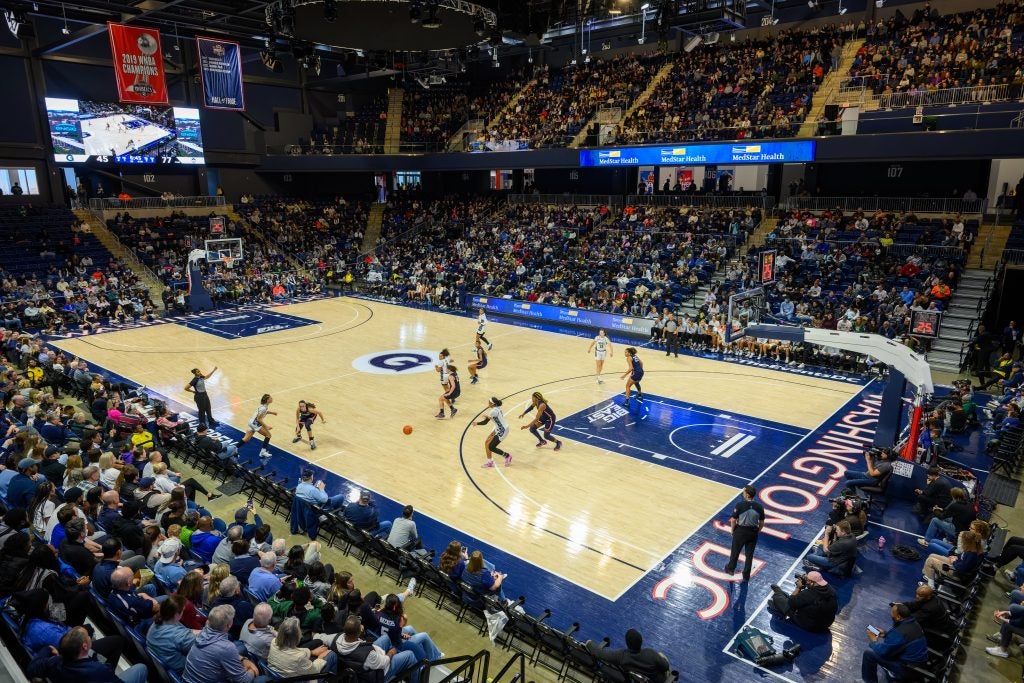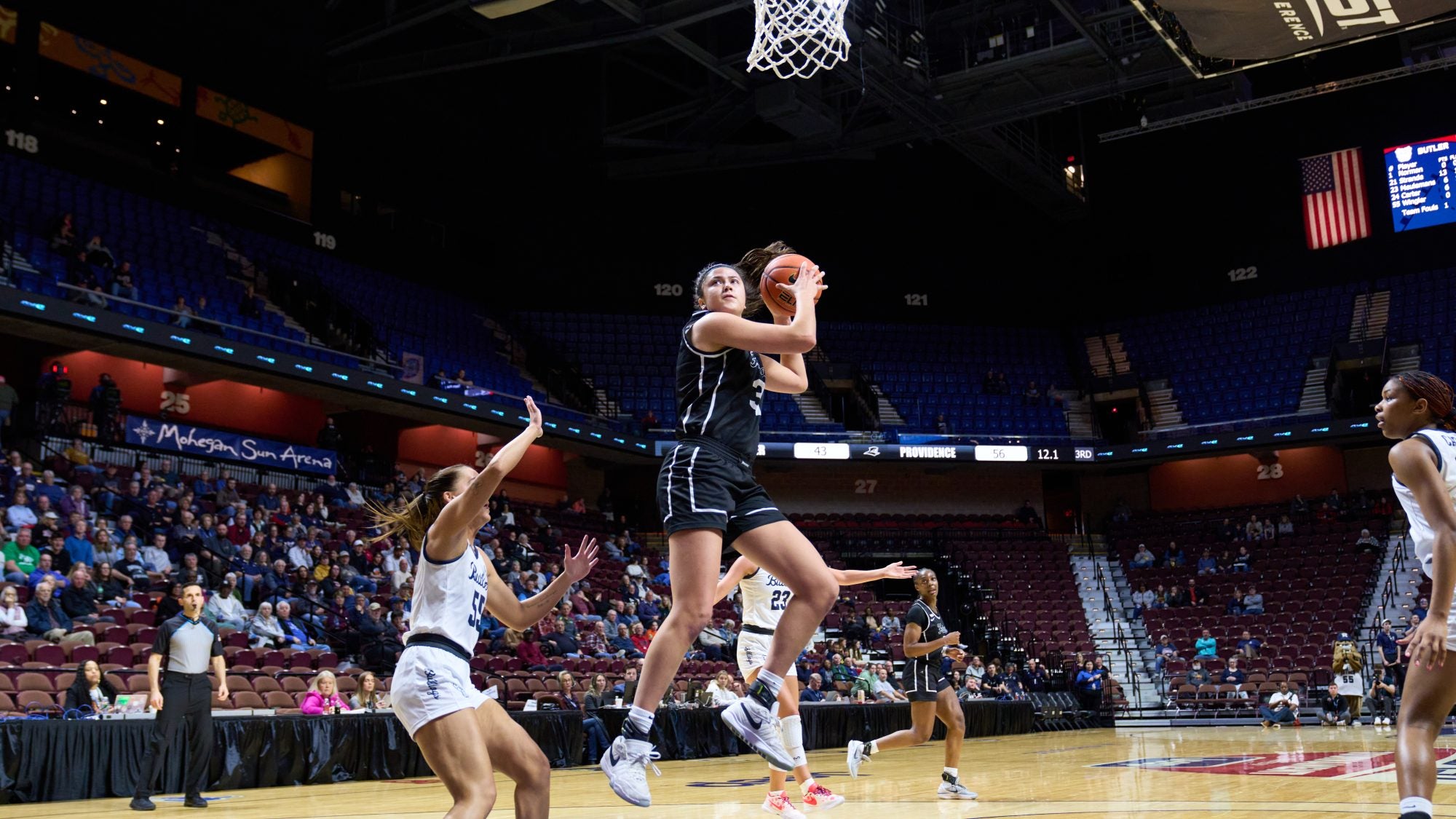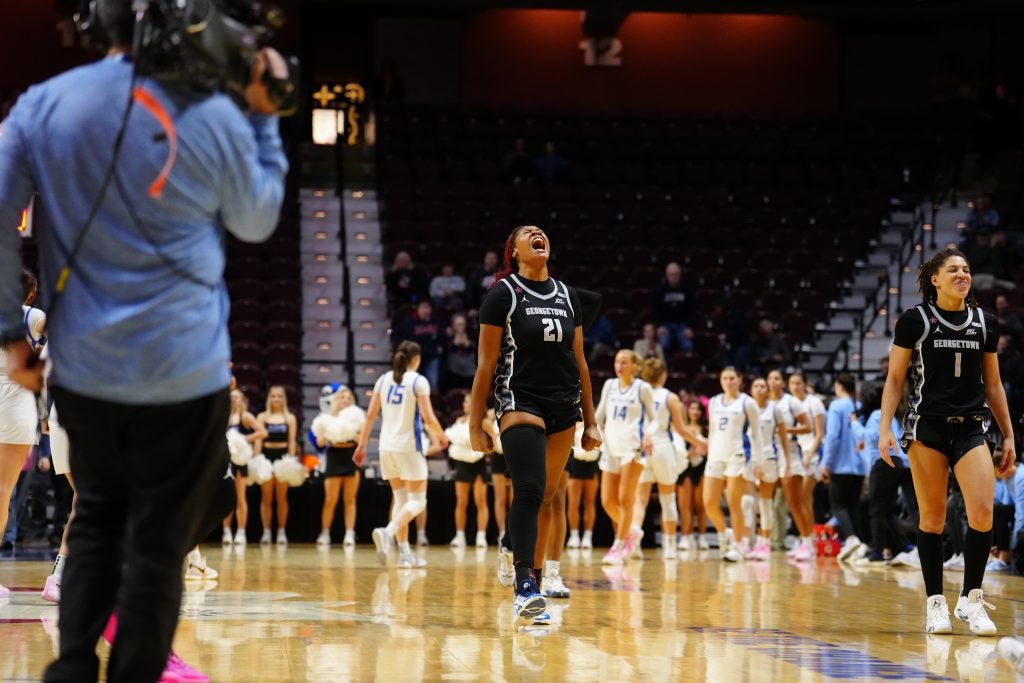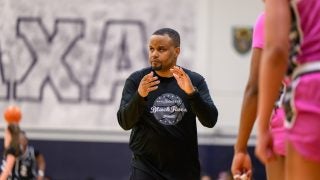Women’s college basketball is entering a new era.
Powered by superstars like Iowa’s Caitlin Clark and LSU’s Angel Reese, ticket prices to this year’s women’s tournament have eclipsed ticket prices for the men’s tournament. In this weekend’s women’s Final Four, ticket prices are more than double that of the men’s Final Four.

In the Elite Eight championship rematch between Iowa and Louisiana State University, a peak of 16 million fans tuned in as the Hawkeyes got their revenge over the Tigers, making it the most-watched college basketball game ever on ESPN platforms.
So how exactly has women’s basketball managed its meteoric ascent, especially since men’s basketball has typically received more resources and attention?
“There has been a continuous and concerted effort to promote and elevate women’s sports,” said La Quita Frederick, faculty director and associate professor of the practice in the Sports Industry Management program in the School of Continuing Studies.
“Superstars like Caitlin Clark and Angel Reese have undoubtedly captured the attention of fans with their exceptional skills and performances … This is not just an anomaly but rather the beginning of a new era,” Frederick said.
To better understand the rise of women’s basketball, read Frederick’s takes on women’s basketball’s March Madness success and how the sports industry can keep the momentum of women’s athletics going.
Ask a Professor: La Quita Frederick on March Madness, NIL and the Future of Women’s Sports
Historically, viewership and demand for women’s sports across all sports at the professional and college levels have been dwarfed by men’s sports. Why is that?
One key factor is that culturally competitive sports have been primarily associated with men which has shaped societal perceptions and expectations. Another key factor is that men’s sports have historically benefited from greater investment and infrastructure, including funding, facilities and support at various levels of competition. Additionally, men’s sports typically have received more airtime, resources and marketing efforts from major broadcasting networks and sports channels. As such, media coverage and exposure have played a significant role. This greater visibility has contributed to higher levels of interest and engagement among audiences. These key factors have collectively and cumulatively contributed to the disparity in viewership between men’s and women’s sports.
Above and beyond those key factors, competitive and organized women’s team sports such as basketball and soccer are still relatively young compared to their counterparts. After all, the NCAA was founded in 1906, the NFL in 1920, and the NBA in 1946. In 1972, Title IX federal legislation was a significant catalyst and turning point for women’s competitive sports at the college level.
Nearly a decade later, in 1981, the NCAA and its governing body approved a plan to include women’s athletics programs and services for its membership. With a more institutional support and organizational structure, women’s sports and teams were established across the nation including the WNBA in 1996 — a full 50 years after the NBA and 15 after the NCAA officially included women’s collegiate athletics. Although 50 years in the making, the strategic efforts to promote gender equity and increase visibility for women’s sports are gradually narrowing the gap.
Sponsorship patterns and commercialization trends further reinforce this gap, with companies traditionally favoring men’s sports for investment due to perceived higher returns. Marketing strategies often align with traditional gender stereotypes, hindering the appeal and visibility of women’s sports. Access barriers, cultural representations and regional variations also contribute to disparities, alongside technological advancements that offer new avenues for promoting gender equity in sports viewership. Addressing these multifaceted factors requires sustained efforts to challenge existing norms, increase representation and leverage digital platforms to cultivate a more inclusive sports culture.

Why are more people watching women’s basketball this year than in years past? Is this year’s surge in popularity just an anomaly with superstars like Caitlin Clark and Angel Reese, or will this trend continue?
The increase in viewership for women’s basketball in recent years can be attributed to several factors. Firstly, there has been a continuous and concerted effort to promote and elevate women’s sports, resulting in greater visibility and coverage across various media platforms with social media by far being the most effective. This increased exposure has helped challenge stereotypes and showcase the high level of talent and competition in women’s basketball.
Additionally, the growing success of women’s basketball programs, both at the collegiate and professional levels, has drawn more attention and interest from fans. Superstars like Caitlin Clark and Angel Reese have undoubtedly captured the attention of fans with their exceptional skills and performances, generating excitement and enthusiasm for the sport. Additionally, these players have high profiles and very lucrative name, image, and likeness (NIL) that have given them additional exposure and visibility beyond your classic, niche women’s basketball fans, including national commercials, feature stories and guest appearances through mainstream medium outlets.
This is not just an anomaly but rather the beginning of a new era. There is now greater investment and infrastructure, including funding, facilities and support at various levels of competition. In 2010, ESPNW was launched to encompass a website, signature events and specialty coverage for women sports. In 2022, the NCAA approved the NCAA Women’s Basketball Tournament to use the March Madness branding across the collegiate spectrum. At the professional level, the WNBA Las Vegas Aces are not only back-to-back WNBA Champions but the first WNBA franchise to have a dedicated headquarters, training facility and venue not shared with their NBA counterparts. If women’s basketball continues to be prioritized and supported, the potential for the upward trajectory of the sport will continue in the coming years.


